Curious to know how to scale your Facebook Ads over $1,000/day? Get our experts' recommendations for free! All our clients went through this step!
Conversion funnels, Digital Marketing sales funnel... How to make $220k a month!
The term “Funnel” is used to designate a qualification and sales process for your prospect.
In my opinion, it is e-commerce’s answer to in-person retail that benefits, by definition, from the whole buying experience (universe, salespeople, greeting, etc.).
Using a funnel is the best way to bring a potential customer into your world and cut them off from external elements that could disrupt their experience with you.
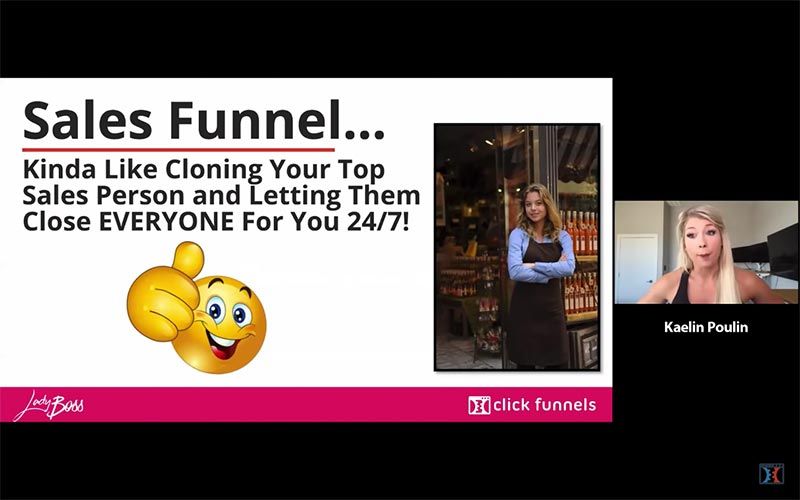
According to the LadyBoss, it’s like having your top salesperson online and working 24/24.
Under such circumstances, you can:
- Sell more: by offering your prospect, throughout his journey, products that will enhance his overall experience (upsells)
- Sell at a higher price: because you add value to your product through a multitude of elements
Tell me about Funnel
To get us off to a good start, I'm going to illustrate what a funnel is.
Not an online funnel, but a real-life funnel!
You’re on holiday in a French village surrounded by vineyards and you’re planning to visit wineries.
In the village, everyone tells you about a winemaker that you have to meet, as his wine is the most renowned in the region.

A small French village just like this one...
Without hesitation, you make your way to the winery to meet this winemaker who welcomes you with open arms and gives you a tour of his vineyard.
At the end of the tour (business oblige), he offers you bottles for purchase.
They’re expensive, more expensive than the wines you usually buy at the supermarket.
But, against all logic, you buy a case (even though you don't drink much!).
"I won't have the opportunity to come back to a village like this one anytime soon," you think.
During the transaction, as you pull out your card to pay, he takes out a bottle opener branded with his winery’s logo.
"You’ll have a souvenir of your visit!" he says.
This bottle opener costs about ten dollars, but never mind! You're already spending a hundred dollars, so another $15 won't make a difference.
At the end of the day, you leave with a case of wine and a bottle opener, convinced that you got a great deal.
The Funnel, explained
Now, let's list the elements that made it possible to sell a simple bottle of wine for a higher price than normal.
1- First of all, the framework or "universe".
You’re in a French village, surrounded by vineyards. In the collective unconscious, this is the best place to discover and taste good wine (more so than at your supermarket).
2- Social proof
Several locals told you about this winery as being the most renowned in the region.
They never told you it was the best wine in the region, but if it's the best-known, it must be, right?
3- Emotion through storytelling
Selling wine solely by its taste is not easy, even to an expert.
If you want to sell at a higher price, you’re better off talking about the winemaking process and telling the story of how it came to be.
The customer will have the impression of tasting the result of this "story" when he drinks your wine.
4- Creating urgency or obligation
That was expensive, but:
- It's really good wine from what I've seen/heard.
- I had a really good time, the winemaker was really nice.
- I'll probably never come back to this place.
5- The additional sale or "upsell"
You’re making a transaction and we add in another (inexpensive) product that will enhance your experience.
It's hard to say no after a yes!
All these elements, in a real-world setting, allowed the merchant to sell a wine at a higher price and add a product that he would never have been able to sell otherwise.
Someone, at some point, understood this and used it to sell any and all products/services on the internet.
DEMOCRATIZATION OF THE FUNNEL: THE CLICKFUNNEL ACADEMY
In the e-commerce industry, one company stands out: ClickFunnel.
Led by - the very salesly - Russel Brunson, it is the #1 tool for any good salesperson/entrepreneur on the Internet.
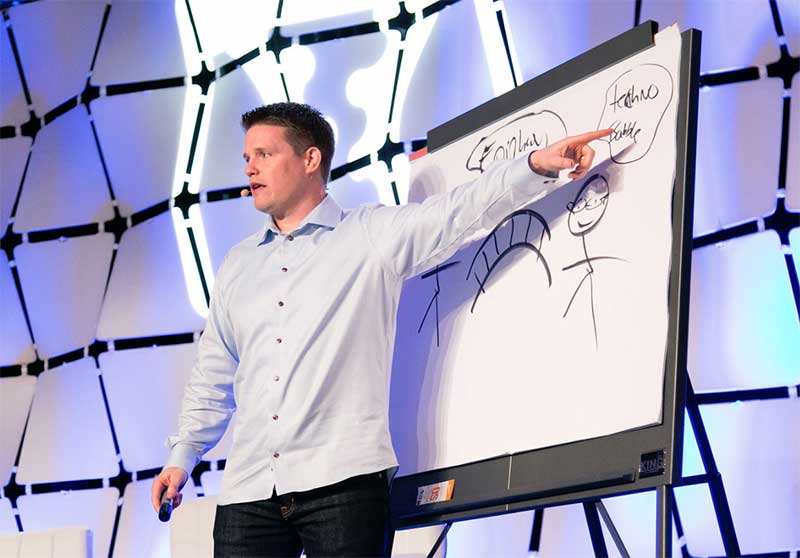
Book, events, podcast, affiliates, videos, webinars and even a rap video: all content is good content when it comes to selling you Click Funnel.
It's no secret, we use this solution for some of our clients. The advertising market being competitive, even a Facebook advertising agency must know how to sell beyond the platform.
Russel Brunson is an influencer that we’re always watching closely, so much so that Robin Vézina devoted a whole Facebook Live to discussing his book, Expert Secrets.
For my part, I will devote this article to the analysis of Kaelin Poulin’s Funnel, alias LadyBoss, who was a guest on the podcast.
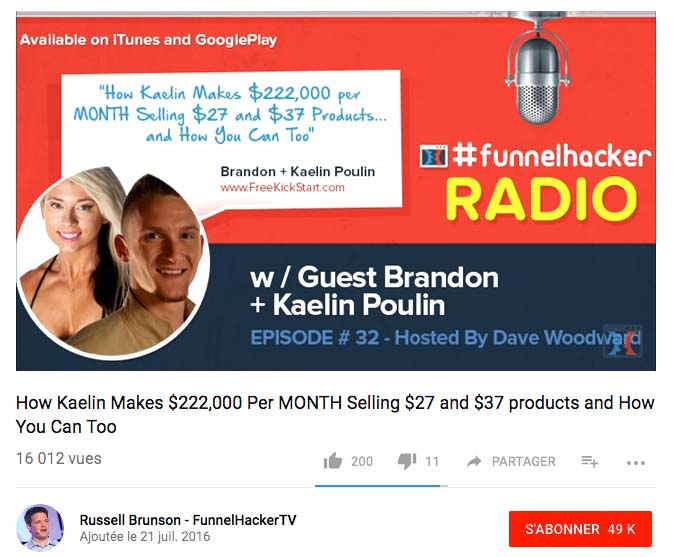
THE $220,000 PODCAST
LadyBoss is Kaelin Poulin’s fitness program (merchandise and nutritional supplements). She sells her program on the LadyBoss website, but her Funnel starts from Freekickstart.com (on which my analysis is based).
Before we get to the heart of the matter, I want to make one thing clear.
I couldn't find the Facebook ads that Kaelin uses to get traffic.
I sent an email to her team asking for photos or videos and if, by any chance, I get a reply, I will update the article.
During her interview with Russel, she clearly indicates that 90% of her traffic comes from this platform, but she also bets a lot on content (she publishes 3 to 4 times a day). It is therefore likely that she promotes the same content with ads (so no evergreen campaign).
In any case, you can be certain that Facebook advertising is part of her sales funnel as she has a pixel installed on her website.
A $220K A MONTH FUNNEL: THE LADYBOSS FORMULA
1) Landing Page & Thank You Page: building your universe
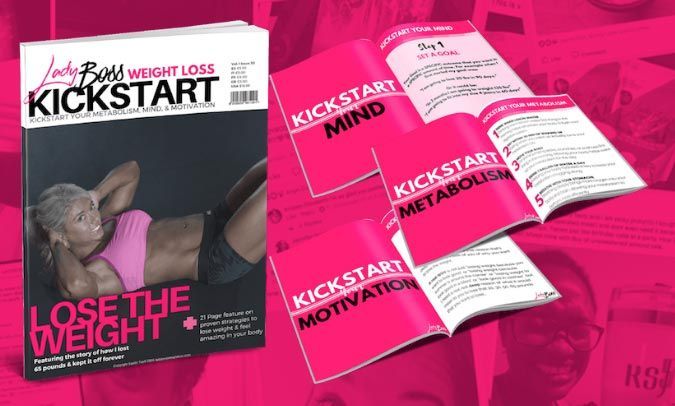
The Freekickstart page
You land on the Freekickstart page for a very simple reason; Kaelin wants to give you a free guide that teaches you how to lose weight “Lose the Weight”.
Right away, it stands out visually: white and pink.
That’s the LadyBoss brand and you can be sure that you’ll see these colors again every time Kaelin interacts with you.
But even before you download her guide, Kaelin gives you a lot of social proof.
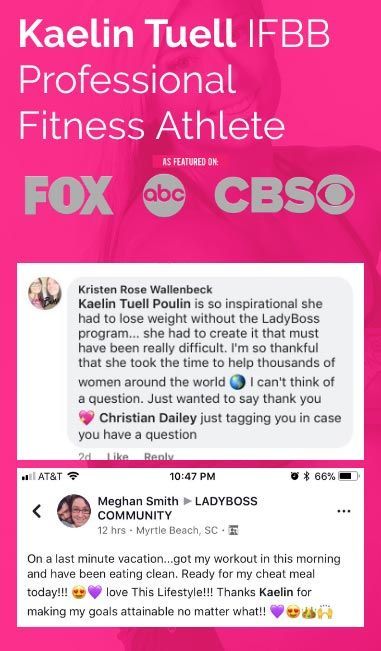
To promote her program, she uses:
- The logos of the nationally known American television channels on which she was featured
- Pictures of her satisfied customers on Facebook
This last element is interesting because she prefers to use low-quality photos rather than neatly retyping customer feedback. In my opinion, there’s two reasons for that:
- It gives a source to your social proof, a source used by the majority of your customers (Facebook).
- It makes the social proof look more authentic. She doesn't need to create fake reviews, she simply takes screenshots using her laptop.
After 2 minutes of reading, you fill out a short form (with your email address) to get the guide and Kaelin sends you on a second page with even more social proof.

Her goal is to get you to convert to her program through a free trial by inundating you with content (I'm serious, there must be 5 meters of page to scroll through!).
And, right away, Kaelin will initiate her lethal weapon: storytelling.
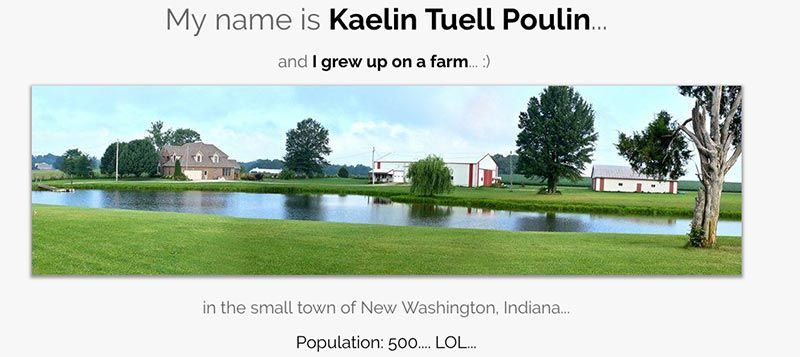
It’s a tool that she starts using on this page, but that she will accentuate even more in her emails (see below). At each new stage of her sales pitch, she will reveal more about herself and her own experience with fitness.
And, with every new secret she reveals, she will add on social proof from her customers on Facebook.
So here’s her process: Storytelling (problem/obstacle) > Educational secret (solution) > Social proof (validation)
Throughout her content, she will spread a total of 14 calls-to-action to get her prospects to fill out the form in the middle of the page.
To make a long story short, Kaelin gives you an opportunity to exit at every meter in case you decide to convert!
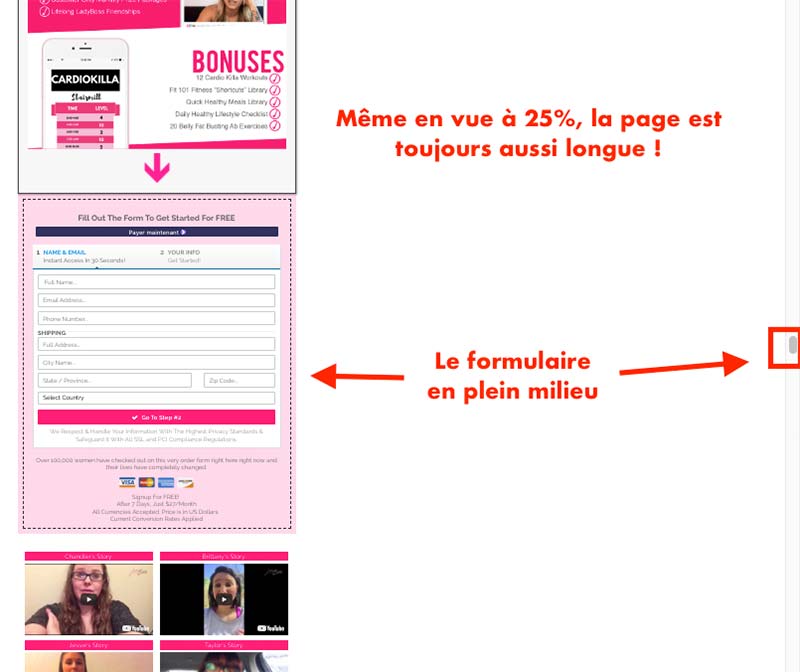
And if her page is that long, it's so that she can take the time to make you want her product and to destroy your counter-arguments.
Because the more you go down the page, the more she will start to aggressively sell you her program with videos, an app, a competitive analysis and price comparisons with everyday purchases.
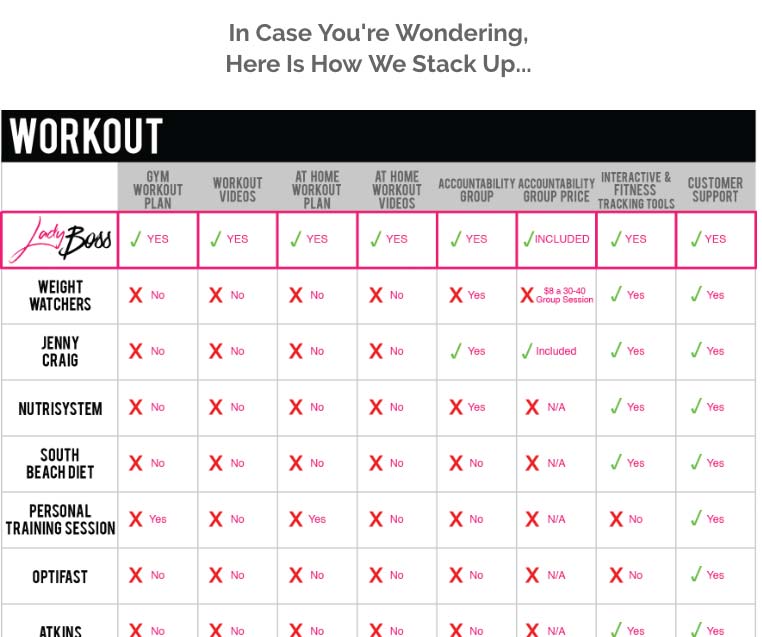
The competitive analysis.
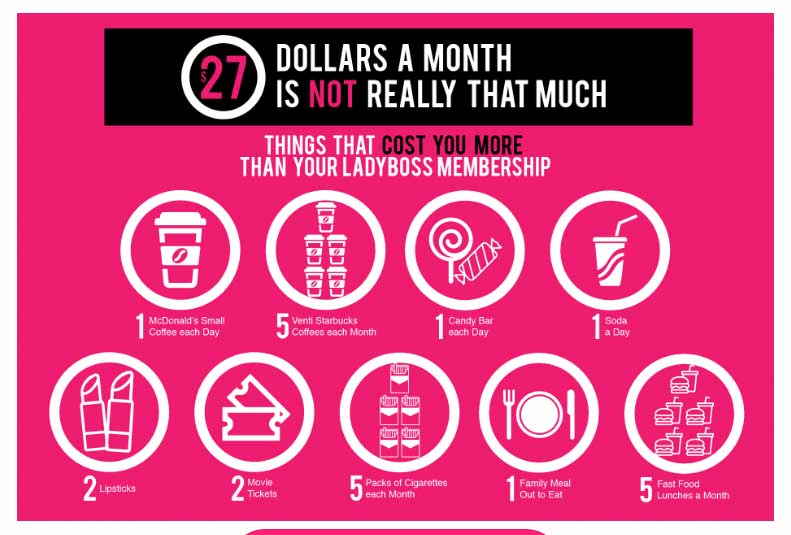
$27 a month, that's the price of a soft drink a day!
It’s followed by an FAQ section, which allows her to answer questions that her clients have asked her in the past. She then displays all the Facebook photos that she didn’t manage to fit on her landing page to finish the job.
2) FREE CONTENT: TANGIBILIZING THE FUNNEL
The guide, beyond the content itself, is a way for your customers to feel like they’re part of your universe.
Especially when it’s made to be printed, and therefore manually handled.
In some way, it allows them to gravitate in your universe which then makes your offer more tangible.
In regards to the content of the LadyBoss guide, I doubt you want to discuss watermelon juice, so I would just note that out of 26 pages :
- 9 are inspiring quotes or sentences
- 1 talks about Kaelin and her story
- 11 are content pages (or blank pages for making lists)
- 5 are sales pages (free trial, program, merchandise, sports supplements, etc.)
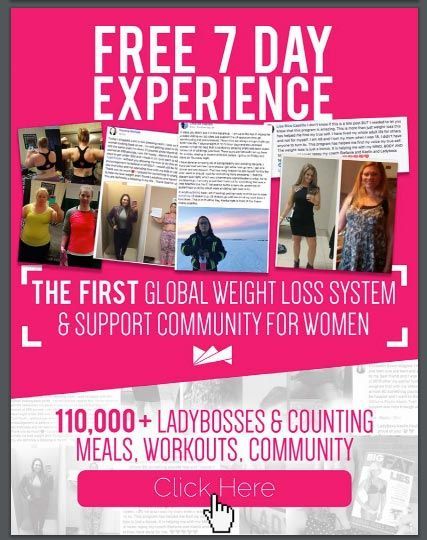
So almost 20% of the content is dedicated to selling you one of her products/services.
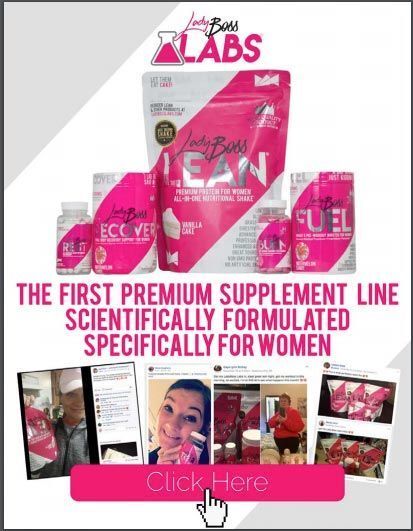
3) EMAILS - FOLLOWING UP WITH THE FUNNEL
Since I’ve inputted my email address to receive the guide, more than 20 other emails have appeared in my inbox.
In total, I think that at least 14 emails are linked to this funnel, since they come in one after the other, day after day.
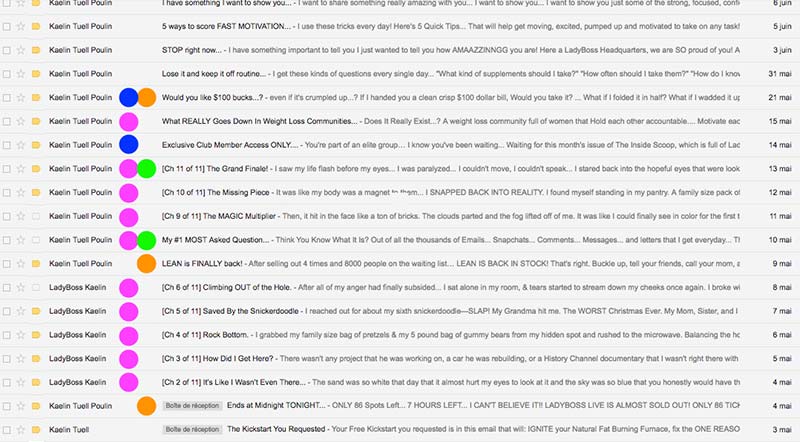
After this number, the emails start to arrive at a few days’ interval before continuing on to another daily sequence.
Each email has a call-to-action to get me on to her program or her online store.
Of course, different emails would appear if you abandoned your shopping cart or your signup to her program.
You will notice colored dots next to these emails, here is what it means:
Pink = Storytelling
Green = Educational content
Orange = Promotion
As I was saying in section 1, she uses and focuses on storytelling in her emails more so than on her landing page.
We learn that Kaelin has, throughout her life, encountered obstacles (notably in her own family) while trying to reach her goal weight.
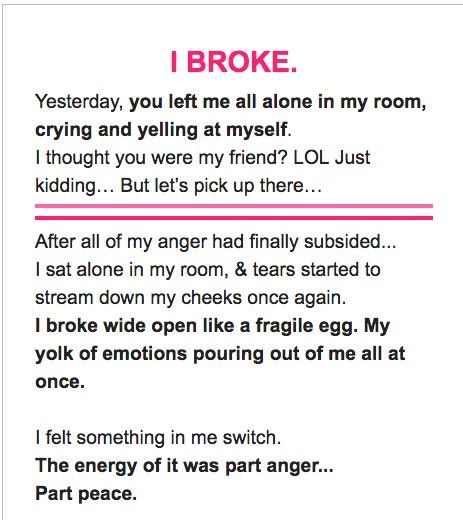
It's hard not to want to know the rest of the story.
A real saga in 8 emails accompanied by promotional messages or content to push you to come back to her website or her e-commerce store.
Of course, storytelling is in no way insignificant in this case.The obstacles cited are those that her clientele is currently experiencing (no self-confidence, no motivation, resignation, etc.).
But it's also a great way to attract sympathy for the LadyBoss. If your communication is focused on yourself (or a fictional character), you might as well make sure that your public likes you.
1 - GIVING BEFORE RECEIVING
It’s a fundamental pillar: reciprocity.
I'll use an example from Dr. Dennis Regan study, “Influence: The Psychology of Persuasion”. The full study can be found here.
Simply put, Dennis looks at how a person reacts when asked for a favour after being offered something (or not). Interestingly, he asks the subject (after the experiment) to indicate whether he or she "liked" the person who asked the favour.
The result is surprising. Whether the subject liked or disliked the other person, she responded positively twice as often when she had been offered something beforehand.
We, as an agency, have noticed that some of our clients come to us from our content.
To provide some clarity: 70% of our clients came to see us 3 months after having first heard of the agency.
That is to say that for 3 months, they consumed our content before making a decision.
2 - BUILD A UNIVERSE
Graphic charter, selfie video, logo, storytelling ... Everything is an opportunity to build and share a universe, an objective and therefore a result.
It’s impossible to be liked by everyone, but it’s possible to be liked even more by an existing follower. You’ll just need a very separate universe.
I was listening to an Amy Porterfield podcast that clearly said:
"Don't try to be the best, but be different."
In the highly competitive market of coaching and weight loss, you have to find a way to stand out and Kaelin understands that!
4 - THE LONGEST STORE IN HISTORY
Selling online doesn't stop at a simple Facebook ad, a nice presentation page and a payment form.
Since I signed up for Freekickstart, I’ve received over 20 emails, not to mention the retargeting ads that they have in place.
The important thing to remember is that as long as the person has not deleted you from their email inbox, Facebook (or even their life), a sale is not impossible.
You’re lucky enough to have an online presence and to be able to retarget your prospect on Facebook, Google, YouTube, Twitter, Linkedin, etc.. A retail store can’t do that!
Also, test upsells.
Your customer is about to place an order, why not offer him an add-on?
And it's as much about Kaelin as it is about her clients when it comes to testimonials. She sells a whole universe around achieving a certain physique, she can’t not put the spotlight on people!
6 - CREATE URGENCY
It's something I didn't touch on much during the analysis, but it's there.

On many pages, we can find a sentence or a countdown timer that will push you to buy faster than you had planned.
Urgency is the best way to trigger an impulse or ill-considered purchase.
Thank you for reading!

